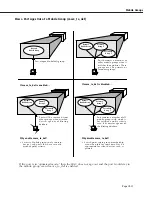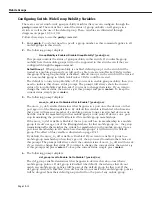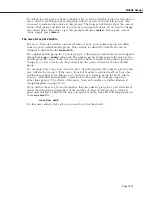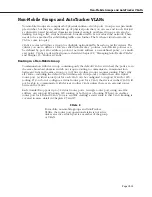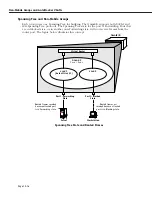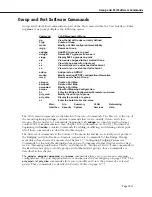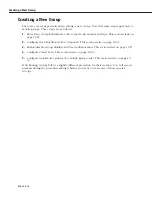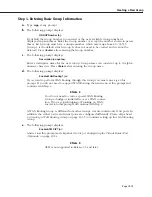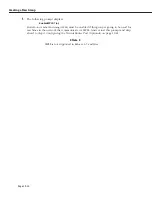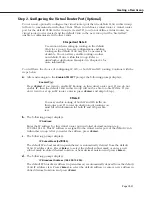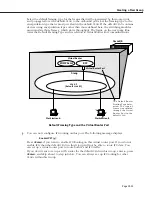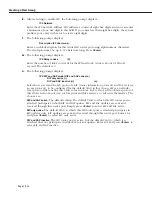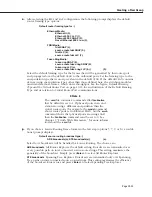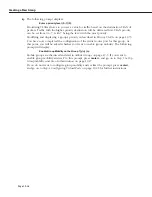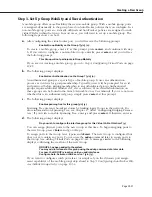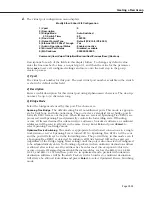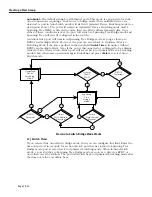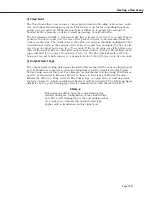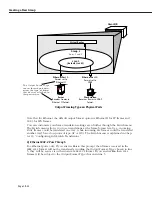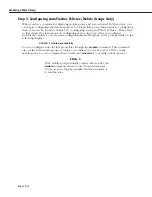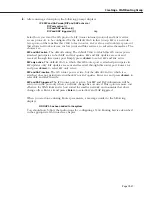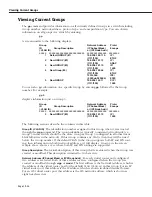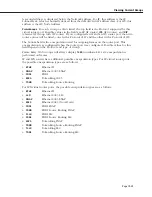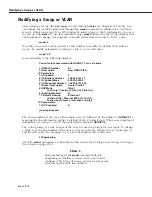
Creating a New Group
Page 19-25
o.
After selecting the
RIP
and
SAP
configuration, the following prompt displays the default
router framing type options:
Default router framing type for : {
Ethernet Media:
Ethernet II (0),
Ethernet 802.3 LLC (1),
Ethernet 802.3 SNAP (2),
Novell Ethernet 802.3 raw (3),
FDDI Media:
fddi SNAP (4),
source route fddi SNAP (5),
fddi LLC (6),
source route fddi LLC (7),
Token Ring Media:
token ring SNAP (8),
source route token ring SNAP (9),
token ring LLC (a),
source route token ring LLC (b) }
(0) :
Select the default framing type for the frames that will be generated by this router port
and propagated over the default
VLAN
to the outbound ports. Set the framing type to the
encapsulation type that is most prevalent in the default
VLAN
. If the default
VLAN
contains
devices using encapsulation types other than those defined here, the switching modules
must translate those frames, which slows throughput. See the figure,
Default Framing
Type and the Virtual Router Port
on page 19-23 for an illustration of the Default Framing
Type and its relation to Virtual Router Port communications.
♦
Note
♦
The
.cmd
file contains a command called
hreXnative
that by default is set to 1. If physical ports in an end
station are using a different encapsulation than the
virtual router ports (for example, the
modvl
command
shows router ports set to Ethernet II
IPX
, but the
swch
command shows that physical ports are using
SNAP
)
then the
hreXnative
command
must
be set to 0. See
Chapter 9, “Switch Wide Parameters,” for more informa-
tion about the
.cmd
file.
p.
If you chose a Source Routing frame format in the last step (options 5, 7, 9, or b), an addi-
tional prompt displays:
Default source routing broadcast type : {
ARE broadcasts(a), STE broadcasts(s)}
(a) :
Select how broadcasts will be handled for Source Routing. The choices are:
ARE broadcasts
. All Routes Explorer, the default setting. Broadcasts are transmitted over
every possible path on inter-connected source-routed rings. This setting maximizes the
generality of the broadcast. Simply press
<Enter>
to select All Routes Explorer.
STE broadcasts
. Spanning Tree Explorer. Broadcasts are transmitted only over Spanning
Tree paths on inter-connected source-routed rings. This setting maximizes the efficiency
of the broadcast. Enter an
s
and press
<Enter>
to select Spanning Tree Explorer.
Summary of Contents for Omni Switch/Router
Page 1: ...Part No 060166 10 Rev C March 2005 Omni Switch Router User Manual Release 4 5 www alcatel com ...
Page 4: ...page iv ...
Page 110: ...WAN Modules Page 3 40 ...
Page 156: ...UI Table Filtering Using Search and Filter Commands Page 4 46 ...
Page 164: ...Using ZMODEM Page 5 8 ...
Page 186: ...Displaying and Setting the Swap State Page 6 22 ...
Page 202: ...Creating a New File System Page 7 16 ...
Page 270: ...Displaying Secure Access Entries in the MPM Log Page 10 14 ...
Page 430: ...OmniChannel Page 15 16 ...
Page 496: ...Configuring Source Route to Transparent Bridging Page 17 48 ...
Page 542: ...Dissimilar LAN Switching Capabilities Page 18 46 ...
Page 646: ...Application Example DHCP Policies Page 20 30 ...
Page 660: ...GMAP Page 21 14 ...
Page 710: ...Viewing the Virtual Interface of Multicast VLANs Page 23 16 ...
Page 722: ...Application Example 5 Page 24 12 ...
Page 788: ...Viewing UDP Relay Statistics Page 26 24 ...
Page 872: ...The WAN Port Software Menu Page 28 46 ...
Page 960: ...Deleting a PPP Entity Page 30 22 ...
Page 978: ...Displaying Link Status Page 31 18 ...
Page 988: ...Displaying ISDN Configuration Entry Status Page 32 10 ...
Page 1024: ...Backup Services Commands Page 34 14 ...
Page 1062: ...Diagnostic Test Cable Schematics Page 36 24 ...
Page 1072: ...Configuring a Switch with an MPX Page A 10 ...
Page 1086: ...Page B 14 ...
Page 1100: ...Page I 14 Index ...

